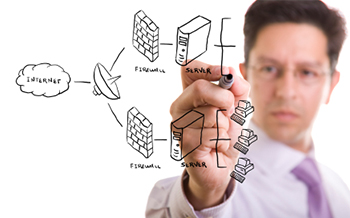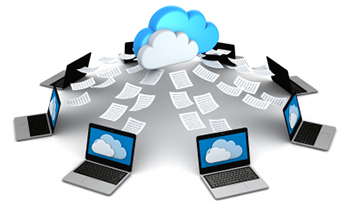Is That a Business Continuity Plan in Your Pocket or a Bunch of Jargon?
Technology is full of difficult jargon. To further complicate things, certain terms are often used in a different context between one publication or service provider and the next. An example of this is the usage of backup, disaster recovery, and business continuity. These terms are commonly used interchangeably, often resulting in confusion. In an effort to alleviate some of this confusion, let's describe each physical process. You will see an overlay among all three, although they are each different processes.
Backup – In IT lingo, the most basic description of backup is the act of copying data, as in files or programs, from its original location to another. The purpose of this is to ensure that the original files or programs are retrievable in the event of any accidental deletion, hardware or software failure, or any other type of tampering, corruption and theft.
It's important to remember that the term "backup" refers to data only and doesn't apply to the physical machines, devices, or systems themselves. If there were a system failure, disk crash, or an onsite physical disaster, all systems would still have to be replaced, rebuilt, and properly configured before the backed-up data could be loaded onto them.
Disaster Recovery – Backups are a single, albeit crucial, component of any disaster recovery plan. Disaster recovery refers to the complete recovery of your physical systems, applications, and data in the event of a physical disaster like a fire; hurricane or tornado; flood ; earthquake ; act of terror or theft.
A disaster recovery plan uses pre-determined parameters to define an acceptable recovery period. From there, the most satisfactory recovery point is chosen to get your business up and running with minimal data loss and interruption.
Business Continuity – Although backup and disaster recovery processes make sure that a business can recover its systems and data within a reasonable time, there is still the chance of downtime from a few hours to many days. The point of a business continuity plan is to give businesses continuous access to their technology and data, no matter what. Zero or minimal downtime is the goal.
Critical business data can be backed up with configurable snapshots that are instantly virtualized. This allows files, folders and data to be turned on and restored in seconds. Bare metal restores of hardware, where an image of one machine is overlaid onto a different machine, is also utilized along with cloud replication for instant off-site virtualization.
Many businesses also keep redundant systems and storage at a different physical location than their main site as part of their business continuity process. They may also outline procedures for staff to work remotely off-site. Some businesses or organizations may go as far as to have printed contact lists and other critical data stored off-site to keep their business moving if a disaster wipes out power and their ability to access anything electronically.
This should clarify the differences between backup, disaster recovery, and business continuity solutions. Choosing what works best for your business will come down to your current IT infrastructure, your budget and how much downtime you can reasonably accept.
Contact us at Cloud Cover

















